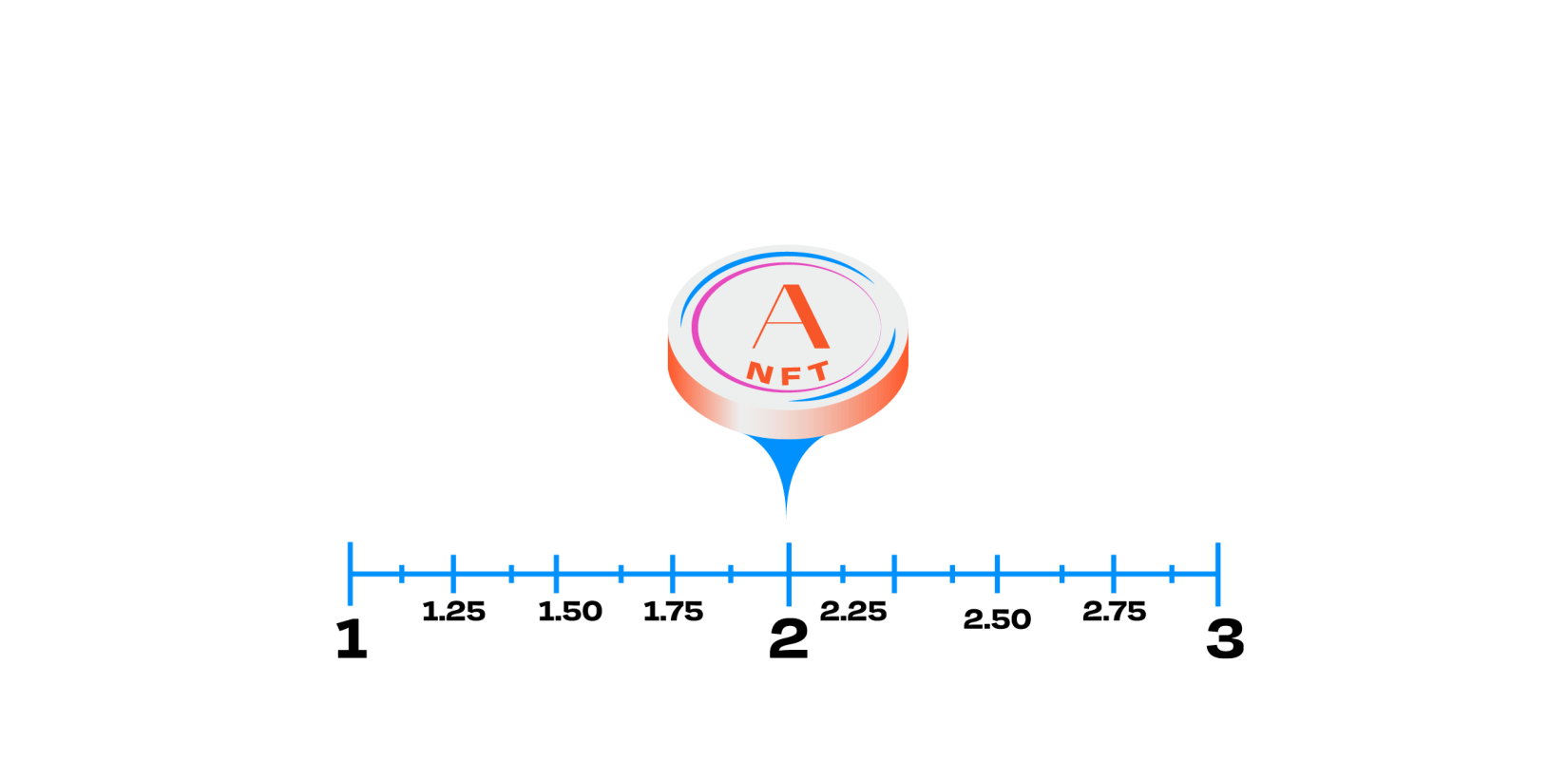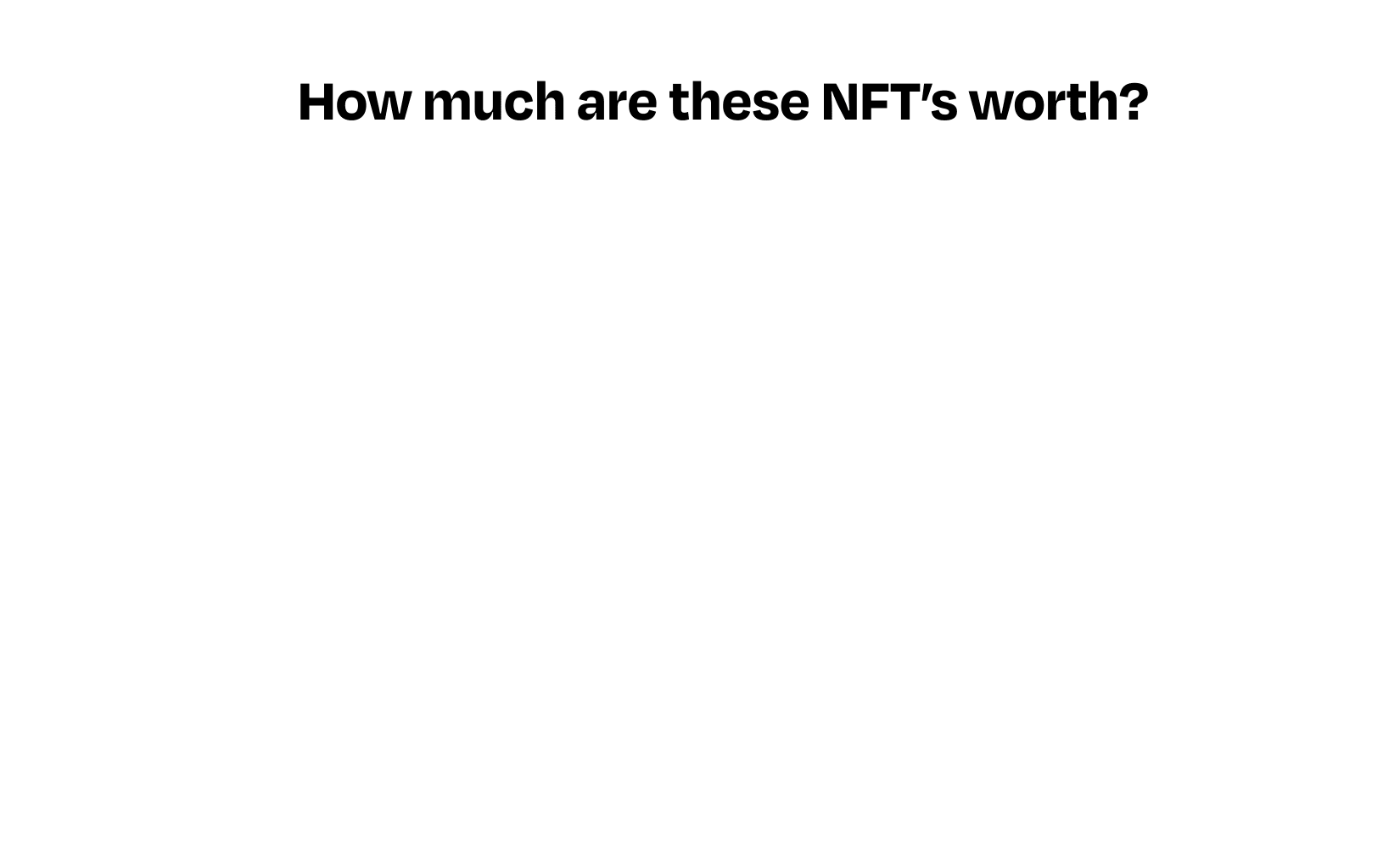Originally Published - September 25, 2020
There does not exist an efficient price discovery mechanism for NFTs. This inhibits the development of many useful products (e.g. underwriting debt with NFTs, NFT indices). Upshot One can be used to appraise the value of NFTs much more efficiently than normal market transactions.

Low-Velocity Assets
The expansion of the financial sector has made many useful financial tools widely accessible. For example, derivatives allow one to buy financial stability (e.g. farmers can buy grain futures to hedge against potential droughts) and craft intricate risk profiles (e.g. by including options into one’s portfolio). However, there remains a large category of assets that remain excluded from this boom — low-velocity assets.
Low-velocity assets are bought and sold infrequently and include real estate, antiques, and non-fungible tokens (NFTs). In this post, we focus on NFTs because they are the low-velocity assets of greatest relevance to the cryptosphere. Bear in mind, however, that this discussion holds true for any other low-velocity asset as well.
The Problem of Pricing Low-Velocity Assets
Low-velocity assets are valued in two ways: transactions and appraisals. Transactions are exchanges between assets and define their market prices. By definition, low-velocity assets are rarely transacted, so their value is rarely definitively known. Alternatively, they may be appraised, where a third-party is paid a fee to estimate the market value of the asset. These appraisals, however, are expensive and may be a function of the true market value of the asset itself (e.g. a luxury real estate appraisal may cost more than an appraisal of a typical house). What’s even more worrisome is that these appraisals are often not decentralized, and therefore more easily corruptible.
In both cases, the value of the low-velocity asset is revealed only after a potentially high-cost is paid. In particular, either the market value of the asset or a function of its estimated value must be paid. These costs inhibit the active, nearly on-demand valuation of NFTs that is associated with high-velocity assets (e.g. BTC, ETH). This excludes low-velocity assets from familiar, valuable financial instruments (e.g. today, one cannot use an NFT as collateral for a loan on Compound).

The Solution: Upshot One
Upshot One provides a solution to this problem. Upshot One is a decentralized question & answer protocol that matches questions to their honest answers. We can translate the problem of trustlessly valuing NFTs to a set of questions on Upshot One. This allows anyone to efficiently query the value of any NFT at a cost independent of the NFT’s value. In fact, this can be accomplished in two ways: the pricing approach and the comparison approach.
In the pricing approach, questions sent to Upshot One directly ask for the price of the asset. They may ask “Is the value of NFT X within [A,B]? Is it C? …” or “Is the value of NFT X greater or less than A?” Then, Upshot One operates as usual and matches these questions with honest answers. Using this approach alone, however, may be problematic in some contexts — it may take many queries to get a price with a particular precision. For example, if an NFT’s price is revealed to be between $1 and $2, and if one wishes to know the price to the nearest cent, then at least two more questions would have to be asked in Upshot One (i.e. “Is it greater/less than $1.50?” then “Is it greater/less than $1.25?” if the answer to the first question is “less than.”). This may render the pricing approach expensive for questions that demand a high-precision. Furthermore, people are notoriously bad with numbers, so their valuations may be wrong, especially for high-precision valuations (e.g. whether a cheap asset is worth $1.02 or $1.03; whether an expensive asset is worth $1,001 or $1,002).

In the comparison approach, a FaceMash-like game is played where two NFTs are simultaneously presented (say, side-by-side) and agents simply choose the NFT of higher value (e.g. “left” or “right”). This is both less expensive and less cognitively intensive than the pricing approach, but it only orders different assets according to their value as opposed to giving them a definitive valuation (e.g. it says A > B > C as opposed to B is worth $X).

To compensate for the complimentary faults of the pricing and comparison approaches, we may use a hybrid approach. The pricing approach serves to find definitive valuations with arbitrary precision as the comparison approach serves to build orderings of assets by their values. The pricing approach as well as actual market transactions establish bounds on assets in the same orderng (e.g. if A > B > C and B is sold for or concluded to be $X, then we know that A is worth more than $X and C is worth less than $X). In this way, revealed NFT prices automatically contribute to the valuations of other NFTs.

Possibilities
The efficient price discovery of NFTs enables a number of exciting possibilities. For the first time, potentially esoteric digital assets can be included in familiar financial instruments. NFTs could be used as collateral for decentralized loans on Compound (e.g. use your CryptoKitties to obtain a leveraged long position on ETH or some other asset). Baskets of NFTs can be formed to determine “NFT indices” that are interesting in their own right. For example, if a game rewards players with various NFTs for various achievements, the value of those achievements (i.e. the value we place on the effort needed to reach those achievements) can be assessed by valuing a basket of the game’s NFTs. The same could be said for valuing brand loyalty (e.g. If your favorite diner disburses NFTs to their most loyal customers, then the value of these NFTs proxies the value of loyalty to that diner.).
…
Valuing low-velocity assets is notoriously difficult. Upshot One is a solution to this problem, and we are particularly excited by the possibilities enabled by efficiently valued NFTs. If you’re interested in exploring the use cases enabled by efficiently priced NFTs, feel free to reach out on Twitter!
Follow us on Medium and Twitter to keep up to date with all things Upshot. To learn more about how Upshot One works, visit upshot.io and check out our whitepaper.
Acknowledgments to a discussion with Jake Brukhman about NFT indices/ pricing which inspired this post and to my co-founder Kenny Peluso for collaboration on writing it.
